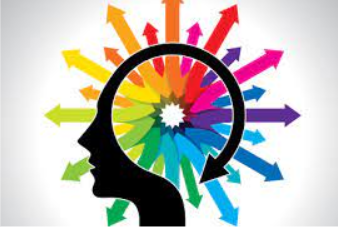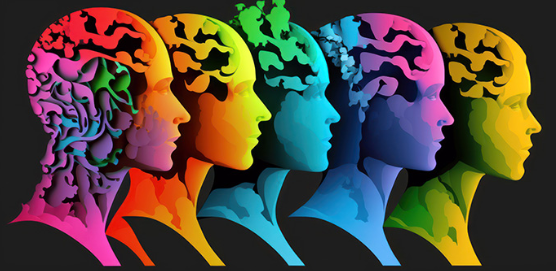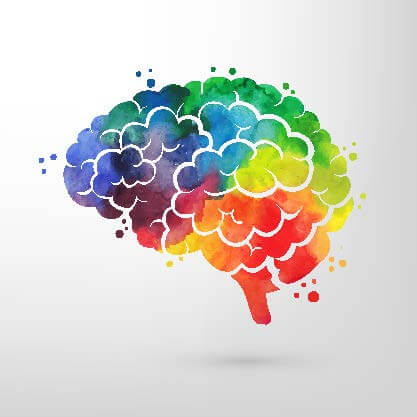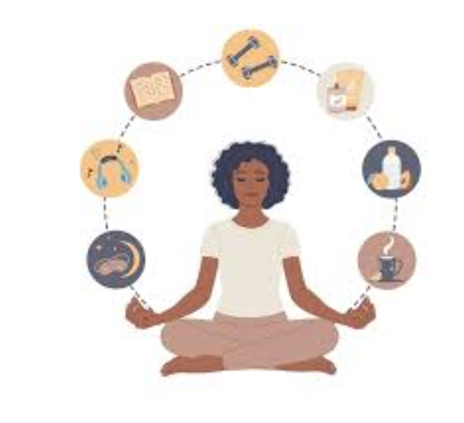The Human Brain as a Canvas: Painting with the Colours of Psychology
- rakheevarma645
- Sep 8, 2023
- 4 min read
The human brain is a remarkable and intricate masterpiece, capable of extraordinary thoughts, emotions, and actions. Comparing it to a canvas opens up the possibility of exploring the colours of psychology that help shape our mental and emotional landscape. In this blog, we will delve into the fascinating connection between art, psychology, and the profound impact of colours have on our lives. By understanding the psychology of colours, we can unlock new insights into perception, emotion, personality, and well-being.
The Palette of Perception: Perception, forms the foundation of our psychological experiences. Colours play a significant role in how we perceive and interpret our surroundings. For instance, warm colours like red, orange, and yellow often evoke feelings of energy, excitement, and optimism. On the other hand, cool colours such as blue and green tend to create a sense of calmness, serenity, and tranquillity. Understanding the psychology of colours in perception helps us appreciate how different hues can influence our thoughts, emotions, and behaviours.
The interesting psychology of colours-
Red: Red is often associated with intense emotions such as passion, love, anger, and excitement. It can evoke a sense of energy, power, and urgency. In psychology, red is believed to stimulate the body and increase heart rate and blood pressure.
Blue: Blue is commonly linked to feelings of calmness, tranquillity, and relaxation. It can evoke a sense of serenity, peace, and stability. Blue is also associated with trust, dependability, and loyalty.
Yellow: Yellow is often associated with happiness, optimism, and positivity. It can evoke a sense of joy, warmth, and enthusiasm. In psychology, yellow is believed to stimulate mental activity and creativity.
Green: Green is commonly linked to nature, growth, and harmony. It can evoke a sense of balance, renewal, and fertility. Green is also associated with healing, relaxation, and abundance.
Orange: Orange is often associated with enthusiasm, creativity, and energy. It can evoke a sense of excitement, warmth, and vitality. Orange is believed to stimulate emotions and encourage social interaction.
Purple: Purple is commonly linked to spirituality, creativity, and luxury. It can evoke a sense of mystery, imagination, and wisdom. Purple is often associated with introspection, intuition, and inspiration.
Pink: Pink is often associated with femininity, tenderness, and nurturing. It can evoke a sense of sweetness, affection, and compassion. Pink is believed to have a calming effect and promote feelings of relaxation.
Gray: Gray is commonly linked to neutrality, practicality, and balance. It can evoke a sense of calmness, formality, and stability. Gray is often associated with intelligence, wisdom, and maturity.

Shades of Emotion in our lives: Emotions add vibrant hues to our mental canvas, shaping our experiences and guiding our actions. Colours have the power to elicit specific emotional responses. By harnessing the psychology of colours, we can intentionally use them to enhance or modulate our emotional states. This can be particularly beneficial in managing stress, improving mood, and creating environments that support positive well-being. The field of emotion psychology explores the range of colours that emerge from within us, from the vibrant red of anger to the calming blue of serenity. Understanding the different shades of emotion enables us to better navigate our inner world and build healthier relationships with ourselves and others. Techniques like cognitive reappraisal and emotional intelligence help us to modulate our emotional responses, creating a more harmonious balance on our psychological canvas.

Brushstrokes of Personality: Just as brushstrokes give a painting its unique texture and style, colours can reflect and influence aspects of our personality and we can identify individuals and their traits with the colours they resonate with. Different hues may resonate with certain traits and characteristics.
Personality psychology encompasses a variety of theories that provide insight into our patterns of thinking, feeling, and behaving. From the extraversion-introversion spectrum to the Big Five traits, these theories help us understand the different colours that compose our personalities. Exploring our own personalities allows us to embrace our strengths, acknowledge our weaknesses, and foster personal growth.
For instance, individuals who prefer vibrant and energetic colours like orange and yellow may exhibit extroverted and enthusiastic tendencies. In contrast, those drawn to calm and soothing colours like blue and green may demonstrate introverted and reflective qualities. By exploring the psychology of colours in relation to personality, we can gain insights into ourselves and others, fostering self-awareness and deeper connections.
The Play of Light and Shadow: Another interesting concept is the interplay of light and shadows in our lives, the way this interplay creates depth and dimension in art and the colours in our surroundings impact our mental and emotional states to various depths.
The psychology of colours is particularly relevant when considering environmental influences on mental health and well-being. For instance, certain colours may promote relaxation and stress reduction, while others can increase alertness and focus. Understanding these dynamics allows us to create supportive spaces that enhance our mood, productivity, and overall psychological well-being. Further colors can be such a positive variant to increase one’s confidence and mood and the following is used by therapists and counsellors to help an individual rekindle with their self and their surroundings.
Colours hold a profound influence on our perception, emotions, personality, and well-being. By exploring the psychology of colours, we can paint a richer and more nuanced understanding of our experiences and the world around us. As we paint the canvas of the human brain with the colours of psychology, we gain insight into our perception, emotions, personality, and mental health. By embracing this interdisciplinary perspective, we can deepen our understanding of ourselves and others, fostering empathy, personal growth, and a more harmonious society.
Just as an artist skillfully selects and combines colours on a canvas, we can intentionally incorporate colours into our lives to enhance our mental and emotional states.
Let us embrace the vibrant hues of psychology, using the power of colours to create environments and experiences that nurture our well-being, foster self-expression, and promote a harmonious and fulfilling life!





Comments